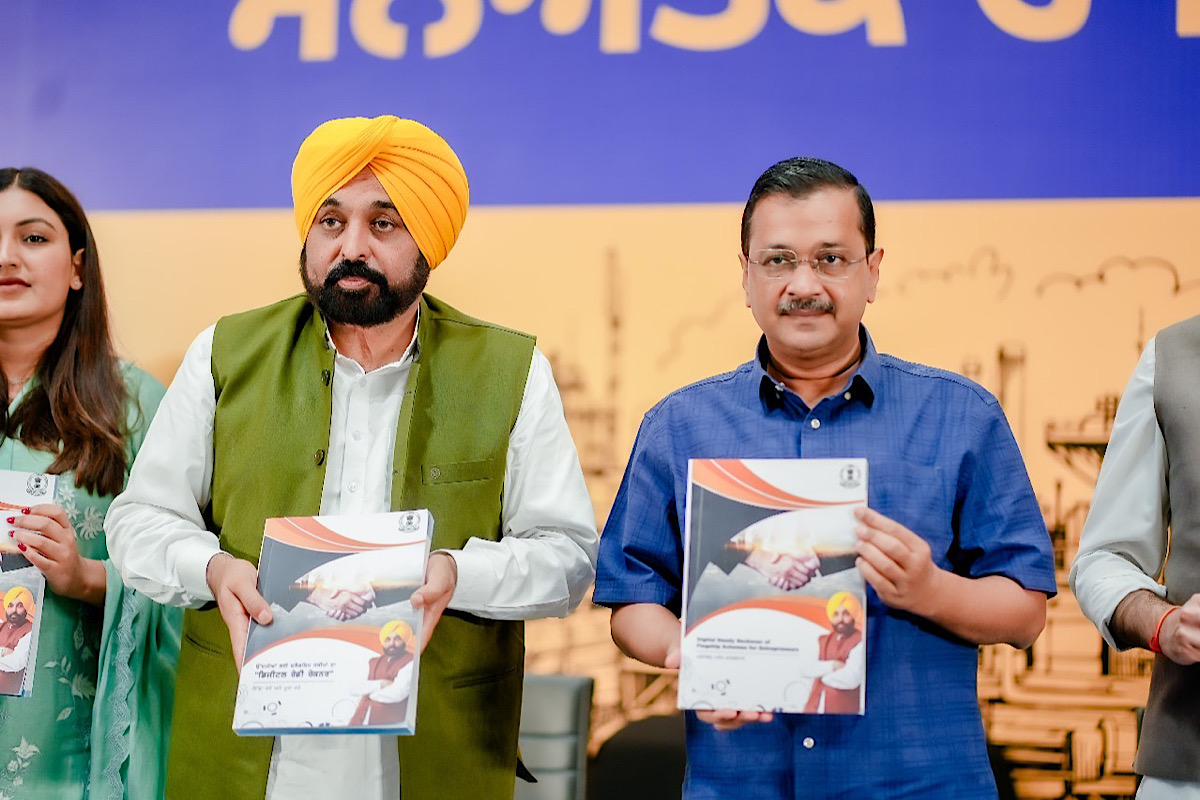Spectacular win of AAP in by-polls a forceful mandate to our pro-people policies: Punjab CM
The Chief Minister said that the victory of AAP on three seats has filled them with more humility and dedication to serve the state and its people.
The single phase election for Punjab’s 13 Lok Sabha seats on June 1 promises to be a watershed moment in the state’s political landscape.

Delhi Chief Minister Arvind Kejriwal and Punjab Bhagwant Singh Mann (Photo:SNS)
The single phase election for Punjab’s 13 Lok Sabha seats on June 1 promises to be a watershed moment in the state’s political landscape. The stakes are high, particularly for the Congress and the Aam Aadmi Party (AAP), the two main players expected to dominate the contest. Both parties are part of the INDIA bloc nationally, and their performance in Punjab will have significant implications not just for the state but for national political dynamics as well. The political battleground in Punjab is distinctly shaped by its divisions: Malwa, Majha, and Doaba.
The Malwa region, in particular, holds considerable sway due to its sheer size and political weight. It encompasses eight parliamentary seats, including key constituencies such as Ludhiana, Bathinda, and Patiala. Historically, control over Malwa has often translated into broader electoral success in the state, as evidenced by AAP’s sweeping victory in the 2022 assembly polls where it secured 66 out of 69 seats in this region. The Congress, which emerged victorious in eight out of 13 seats in the 2019 Lok Sabha elections, faces a formidable challenge from AAP.
The AAP’s campaign is spearheaded by Punjab Chief Minister Bhagwant Mann and Delhi Chief Minister Arvind Kejriwal, who are leveraging their governance credentials and appeal among the youth and urban voters. The party’s recent win in the Jalandhar byelection underscores its growing influence. On the other hand, the BJP, although historically less dominant in Punjab, has strategically fielded strong candidates such as former ambassador Taranjit Singh Sandhu in Amritsar and Preneet Kaur in Patiala. The BJP’s ability to make inroads in constituencies like Gurdaspur and Hoshiarpur in 2019 demonstrates its potential to disrupt the Congress-AAP dichotomy. The inclusion of high-profile turncoats from Congress and AAP in its line-up adds another layer of intrigue to the electoral battle. The Shiromani Akali Dal (SAD), once a dominant force in Punjab politics, is also in the fray, though its influence has waned in recent years.
Advertisement
The party’s performance will largely depend on its ability to mobilise its traditional vote bank and leverage issues pertinent to the Sikh community, particularly in the Majha region, home to the Golden Temple in Amritsar. Punjab’s electoral dynamics are further complicated by the sociopolitical context. The Malwa belt, the epicentre of the farmers’ agitation against the Union government’s farm laws in 2020-21, remains a politically charged region. The outcome in this belt could serve as a barometer for the prevailing sentiments among the agrarian communities. Additionally, the Doaba region’s significant Scheduled Caste population, the highest in the country, makes it a critical area for all parties to secure. The Punjab elections are poised to be a fiercely contested affair with far-reaching implications. As the campaign heats up, all eyes will be on how Punjab’s vibrant democracy navigates this pivotal moment.
Advertisement